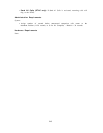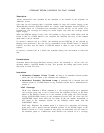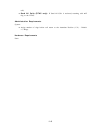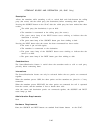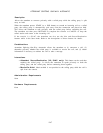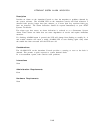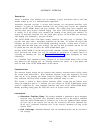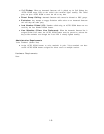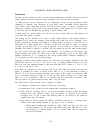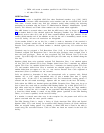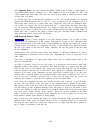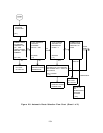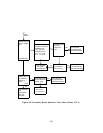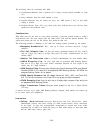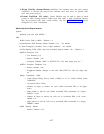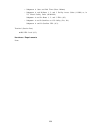AUTOMATIC ROUTE SELECTION (ARS)
Description
Provides for the routing of calls over the telecommunications network based on preferred
routes (normally the least expensive route available at the time the call is placed.)
An ARS pattern can be composed of two subpatterns (time of day determines which
subpattern is selected), each consisting of up to three routes, associated Facility Restriction
Level (FRL) codes (described below), and CO overflow flags. A route is identified by
specifying a Facility Access Code for the pooled facility (trunk group); for V2 systems only,
a route may also be identified by specifying a Virtual Facility code.
A trunk group (or virtual facility, for V2) can be used in more than one ARS pattern and
more than once within a pattern.
Call routing can be specified by as many as eight routing patterns. Each pattern contains a
sequential list of routes (for example, trunk groups) the system can use to complete a call.
Number translations (deletion and addition of dialed digits) necessary to route the call is
determined on a trunk group basis.
Overflow to the local CO when all trunks in a pattern
are busy or the route FRL is too high is optional.
If all trunks in a pattern are busy
(including CO trunks if overflow is allowed), the call queues on the first route in the pattern.
All calls placed using the ARS access code (default = 9) are routed via the feature. The
dialed numbers that follow the ARS access code are generally seven or ten digit DDD
numbers preceded by a “l” if required by the serving Central Office. Numbers preceded by a
“0” are routed over the local CO pooled facility.
Typically, a dialed 7-digit number consists of a CO code and exchange number in the form
NXX-YYYY where N = 2-9, X = 0-9, and Y = 0-9. A 10-digit number consists of an area
code, CO code, and exchange number in the form NPA-NXX-YYYY where N = 2-9, P = 0-1,
A = 1-9, X = 0-9, and Y = 0-9.
Each route in a pattern has an associated FRL (0-3). This FRL may differ each time the
facility is specified as a route.
A facility with a FRL of “0” is least restricted to callers; a
FRL of “3” is the most restricted. Similarly, each station in the system is assigned an FRL
(0-3). A terminal assigned an FRL of “0” has the least ARS privileges (i.e., routes with
FRLs of 1-3 are restricted); a FRL of “3” provides the most privileges. A station’s FRL
must be equal to or greater than the routes FRL to use the route.
The ARS feature, when accessed, selects a pattern as follows:
● Emergency Number Calls (routed via the local CO facility)
● International Calls (routed via the administered international pattern)
● Calls made to specified COs or seven digit telephone numbers within the Home
Number Plan Area (HNPA). These calls are routed as specified in the HNPA
Exception Lists, or else via the NPA Routing Table or (by default if not otherwise
specified) the local CO facility.
● Calls made to NPAs outside the HNPA, sometimes referred to as Foreign NPAs
(FNPAs). The route selected depends on the type of call, as follows:
—
FNPA special number calls (includes all “800”, “900”, and Telex 510, 610, 710,
and 810 numbers). For V2 systems, each FNPA of the form N00 and
N10 may
be assigned to a routing pattern.
For V1 systems, these calls are routed via
the local CO facility.
2-51



